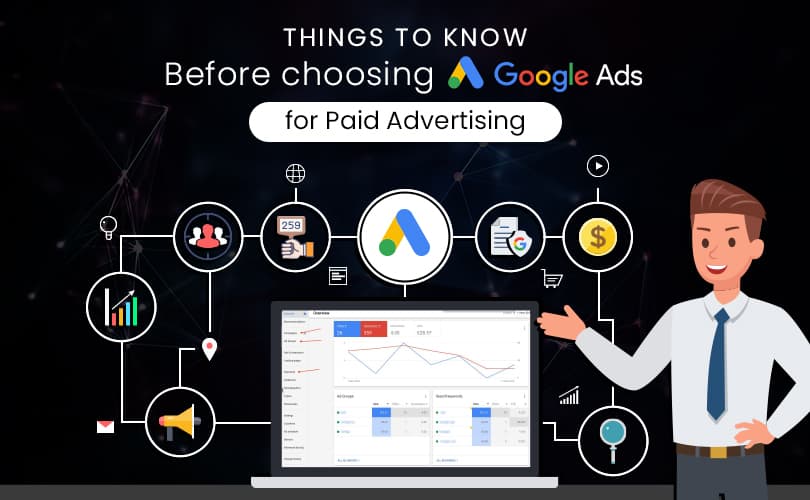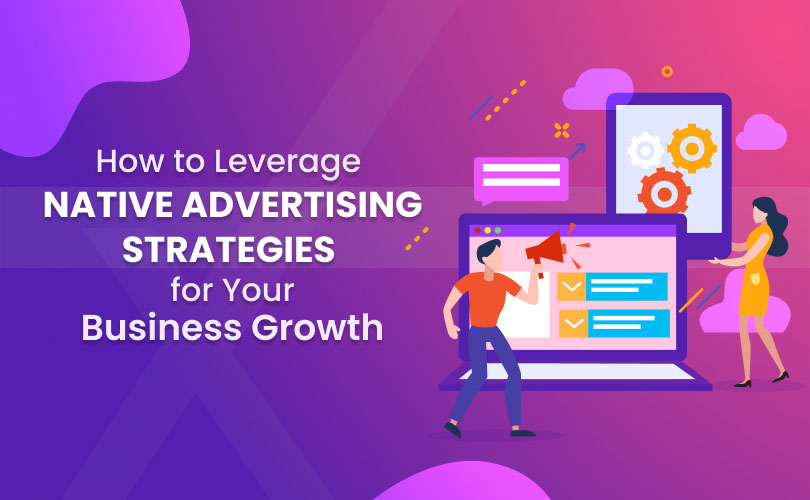Things to Know Before Choosing Google Ads for Paid Advertising

Throughout the most recent years, paid advertising has become a primary component in most every marketing plan. And if it still doesn’t have a role, it’s about high time you give it one. Whether your business is B2B or B2C, digital advertising not only helps you increase revenue but also builds and strengthens the online identity of your organization.
One of the best platforms available for paid advertising is Google ads.
Google Ads
Google Ads is the online advertising platform for Google. This software empowers you to create online ads to reach audiences that are interested in your products and services. Not only is Google Ads flexible, but it’s also suitable for all kinds and sizes of organizations. In 2019 alone, Google made a revenue of $38.9 billion. When running Google Ads, most businesses see a 200% return on their investment. This statistic alone makes Google Ads one of the most efficient means of advertising.
A few facts about Google Ads

If you’re planning to invest in paid ads, it’s nearly impossible not to incorporate Google Ads into your marketing strategy. Here are some of the main benefits you stand to gain by using Google Ads –
- Google owns 71% of the search market share.
- Google owns the world’s biggest online display of any advertising network.
- Google’s display campaigns reach 80% of global internet users.
- 86% of users on Google use it to find a local business.
- 72% of Google users prefer to get their information about local dealers by searching them on Google.
- 97% of Google’s total revenue comes from advertising.
Why You Should Choose Google Ads
The primary benefit of using paid advertising is it drives leads to your company and quickly converts them into sales. A few of the many features offered by Google Ads, which are also the many reasons you should use it for your paid marketing strategy, are listed here below.
Multiple Bidding Strategies
The main aspect of paid ads is bidding. A bid is the anticipated money Google would charge you for your search or display ads. Google Ads offer multiple bidding strategies that cater to your specific needs and objectives.
Target CPA with Limit
With a target CPA (cost-per-acquisition), you can limit your bid. This ensures the CPA of your campaign will not go beyond the limit you’ve set for yourself, thus optimizing your budget.
Fixing a Campaign Based on ROAS
You also have the option to choose an ROAS (return-on-ad-spend) limit as a bidding strategy. This will ensure you get the return you want on conversions.
Bid to Maximize Your Conversions
If your goal is to maximize conversions, you can select your bidding strategy to do just that. Irrespective of the CPA strategy, your campaign will drive maximum conversion ratings.
Substantial Targeting Options
Google Ads offers the broadest range of targeting options offered by any search engine. We’ve listed a few of these targeting options below.
Audience Targeting
Affinity Audience
If you’re looking to reach a wider audience with your ad campaign, you should choose affinity targeting. Google Ads will provide you with a list of broader interests to target.
Custom Intent Audience
With custom intent in Google Ads, you can customize your target audience based on the keywords they search for, websites (URLs) they visit, and YouTube channels they subscribe to.
Similar Audience
With Google Ads, you can target a wider audience to reach with your re-marketing campaign. This allows you to expand your audience by targeting users with similar interests.
In Market Audience
Google Ads allows you to target the audience based on the behavior like what they are actively searching for.
Content Targeting
Another targeting option that makes Google Ads an excellent choice for display ads is content marketing. Content targeting allows you to target your audience based on three targeting options; topic, placement, and keywords.
Topic Targeting
You can target your audience by choosing a topic. Google will then display your ad on websites by covering that particular topic.
Placement Targeting
With placement targeting, you can target customers by using specific URLs from the websites they visit.
Content Keyword
Choose websites which contain the keywords you are specifically targeting. From there, Google will display your ad on those particular sites.
Google Ads Policies
Being the world’s most prominent search engine, Google has begun to regulate its ads business throughout the years. Here are some of the ad policies you’ll need to know before you start with Google’s ad platform.
1) Prohibited Content
There are two types of products and services that Google Ads prohibits from being promoted; counterfeit gods and dangerous products or services. This also includes practices that encourage dishonest behavior and inappropriate content.
- Counterfeit Goods –Google Ads won’t advertise counterfeit goods, including a trademark or logo that is equal to or considerably similar to the brand of another.
- Dangerous Products or Services –Google does not acknowledge products or services that promote suffering, injuries, or may cause damage such as weapons, explosives and other lethal items.
- Inappropriate Content –Google doesn’t allow any inappropriate content in ads that include intolerance, hatred, discrimination, or violence.
2) Prohibited Practices
Prohibited practices are undesirable actions that advertisers aren’t allowed to do as they continue running ads. Such actions can get your account banned altogether from Google Ads.
- Abusing Ad Network –Ad networks can be abused in many ways such as cloaking, arbitrage, promoting bridge, etc. Google does not allow any content or ads that will interfere with their review process.
- Data Collection & Use –Google wants its advertising partners to understand it won’t misuse the information of its users; therefore, it refrains from collecting personal data such as credit card numbers, sexual orientation, etc.
- Misrepresentation – Google doesn’t want people to feel victimized by ads, so they try to make ads transparent, accurate, and give the knowledge that consumers need to get acquainted with.
3) Editorial & Technical Requirements
Ads that are being presented need to be interesting for users without being disturbing challenging to communicate with. So, editorial requirements have been expanded to make ads more attractive.
Most advertisers nowadays aren’t knowledgeable of these details when it comes to Google Ads paid marketing. By educating yourself, you can take advantage of the benefits offered by Google Ads and gain an advantage over the competition.
About Author

Ashish Roy
Since founding Cibirix, Ashish has leveraged his marketing degree to lead the agency in crafting meaningful digital marketing experiences for clients. His results-driven approach is a unique mix of analytical thinking, crisp visual aesthetics and a desire to simplify frontends while developing robust architecture. With a passion for design, technology, & marketing, He leads each aspect of the agency’s business and oversees its talented team of digital professionals.

